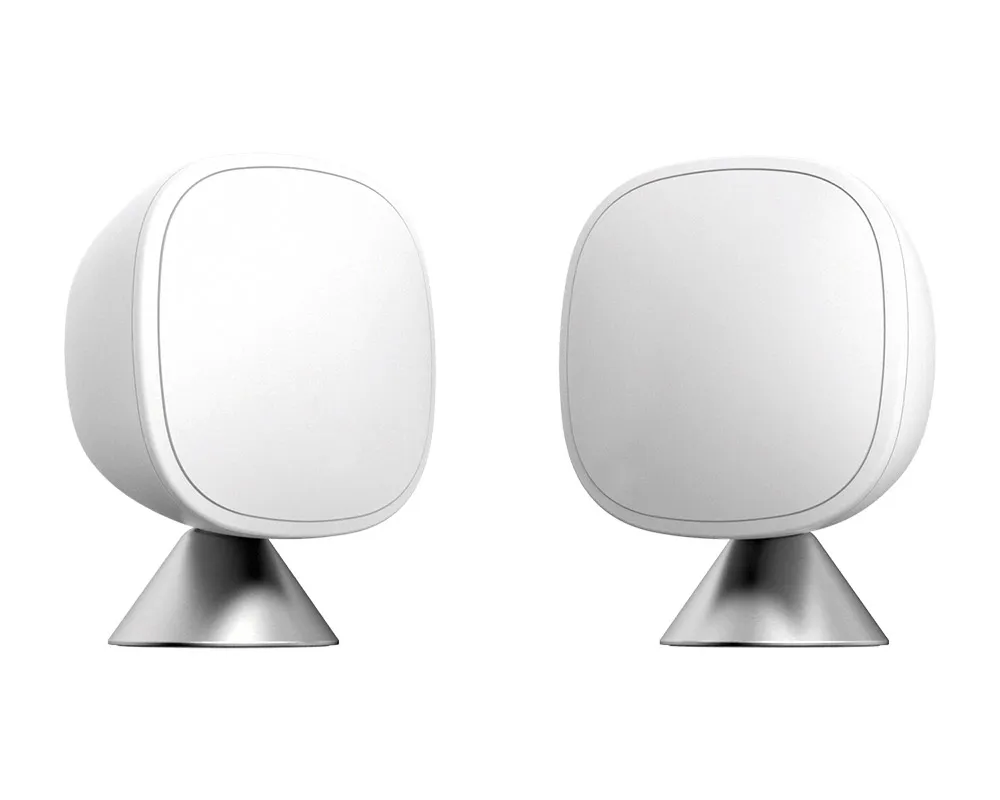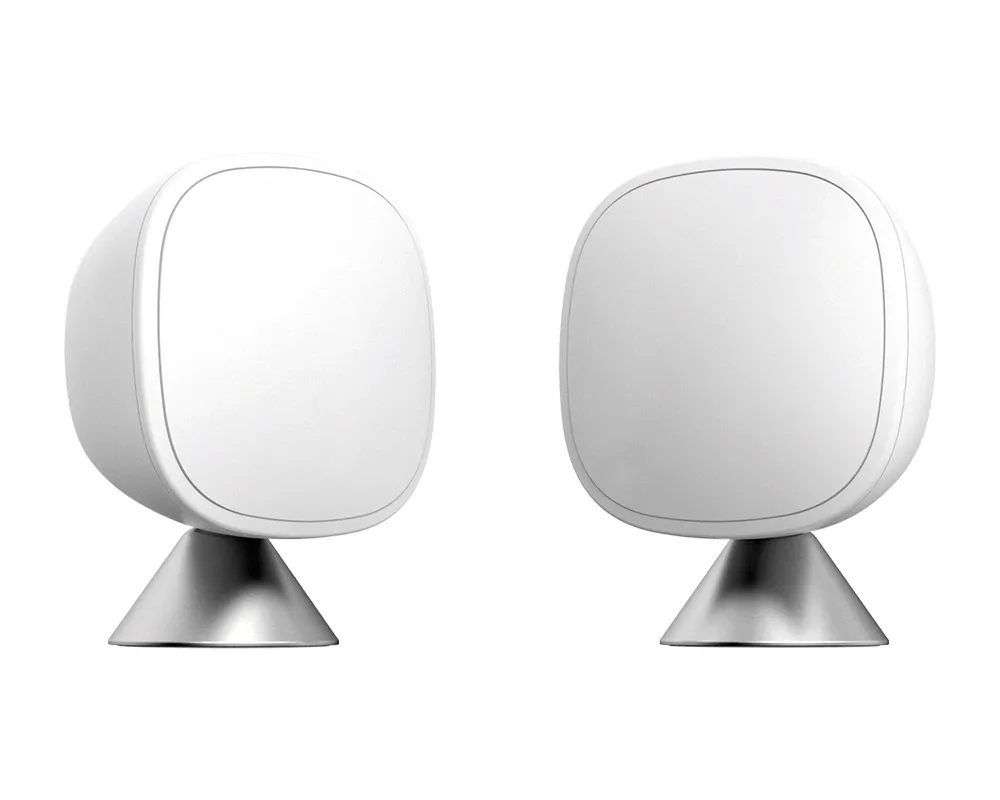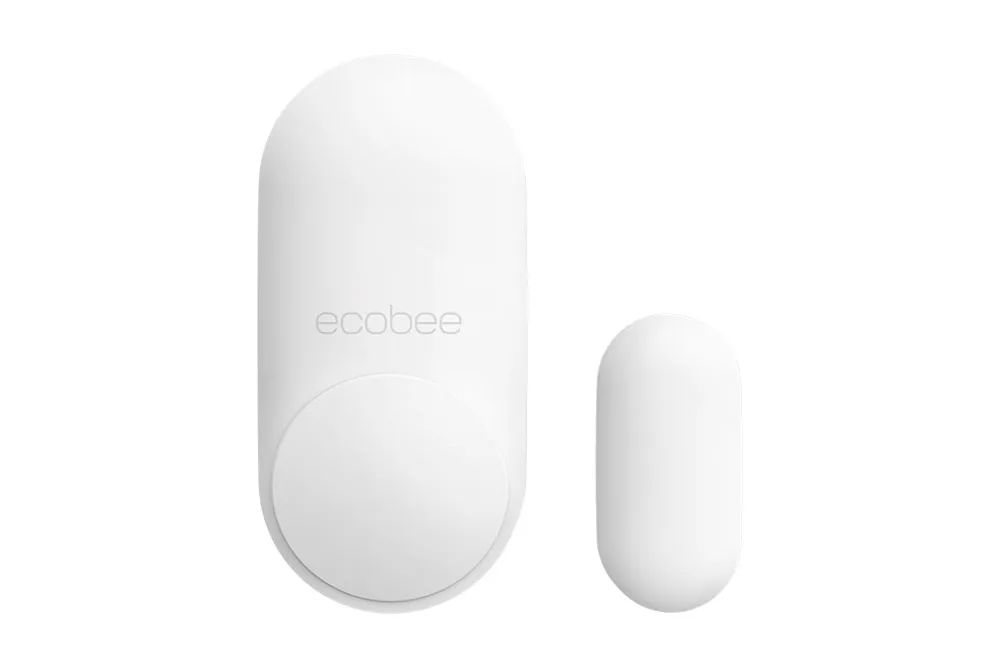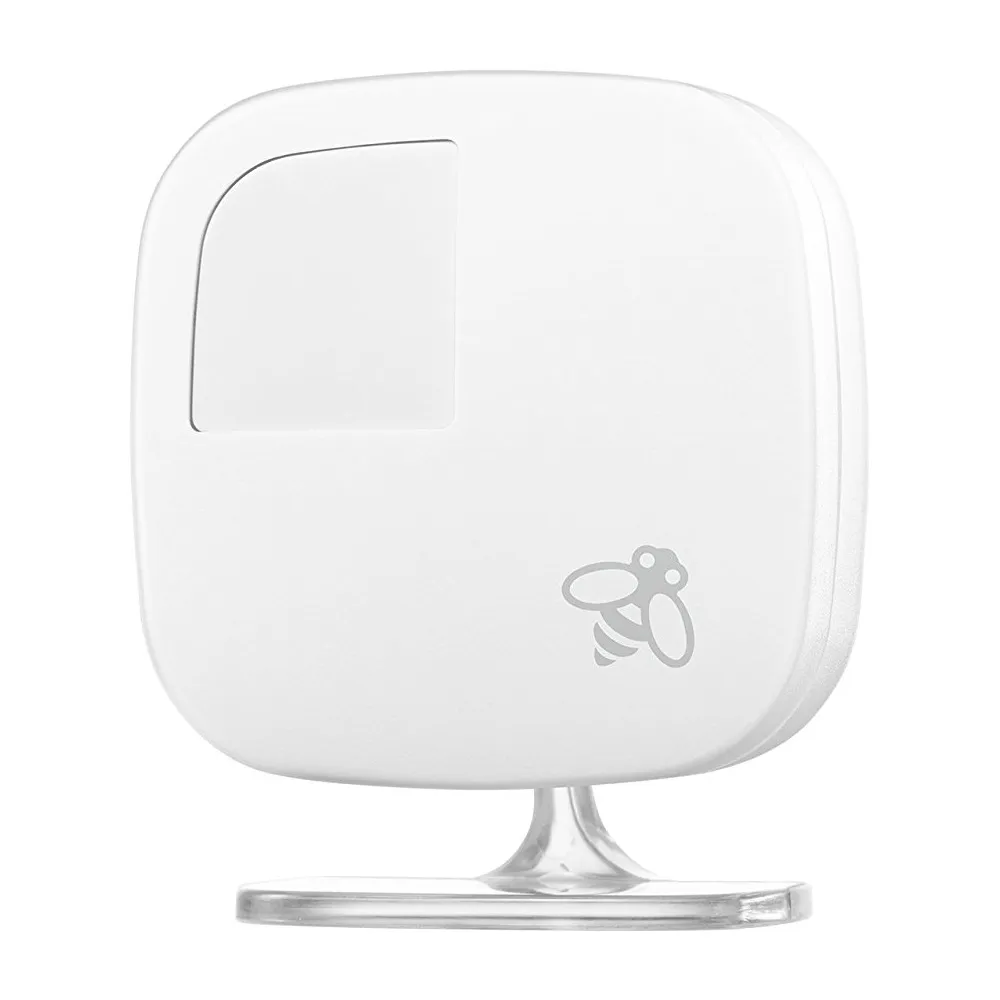
Ecobee, in my opinion, is the best smart home thermostat with Google Nest being a close runner up. One thing that these two leading smart thermostats have in common are remote sensors. Google actually emulated Ecobee once it saw how useful and effective these added sensors can be. So, what makes the Ecobee sensor so great? In short, it’s how it helps to regulate the temperature in your house.
How Does Ecobee Smart Sensor Work to Regulate Temperature? Ecobee SmartSensors collect temperature and occupancy data for a room. That data is sent to the Ecobee Thermostat and is used to heat or cool the house based on your comfort setting, and if you have Follow Me and/or Smart Home & Away enabled.
I will sometimes use the average temperature from the sensors, but the most useful feature for me has been being able to program the Ecobee to look at different sensors depending on the time of day. For example, I use only the bedroom sensors while we are sleeping at night. That’s only the tip of the iceberg. There are multiple options you have when using SmartSensors. Let’s take a closer look at how the Ecobee SmartSensors work and what your options are when using them.
How Ecobee Regulates Temperature using Smart Sensors
There are three primary settings, or modes, that Ecobee uses with the sensors. Let’s take a look at each one.
Ecobee Smart Sensor Participation
This is probably the most important feature of the three, that’s why I’m talking about it first.
The best place to put SmartSensors in the house are the places you use the most. You can have sensors participate in the average temp based on schedule/comfort setting. Every time you pair a SmartSensor to your Ecobee thermostat you will be asked which Comfort Settings you’d like it to participate in. Of course, this can be changed later on as needed.
The Ecobee thermostat comes with three default comfort settings, but more can be added. Each comfort setting can be customized to your schedule and preferences. To learn more about comfort settings, check out Ecobee webpage here.
If the “Follow Me” setting in not enabled (we’ll talk about that in the next section), then the sensors participating in the active comfort setting will be averaged. By choosing which sensors participate in each Comfort Setting, you’re the one in control over how your Ecobee calculates the average temperature. Each comfort setting must have one sensor participating, and yes, you can disable the sensor in the actual Ecobee thermostat if you only want to use a remote sensor somewhere else in the house.
Here’s an example. At night, I only have the bedroom sensors participate in my “Sleep” comfort setting. During the weekday, as I work from home, I’ll add the office and kitchen to my “Work” comfort setting. During the day, I don’t have the bedroom sensors participating as we are never in them. In the evening, after dinner, I turn off the kitchen sensor and add the bedrooms back in as well as the living room.
Other spots that are great for placing a SmartSensor would be areas that are typically warmer or cooler than the rest of your house. A common example of this is when one thermostat controls the air conditioning for both upstairs and downstairs. Heat rises, so if the thermostat is downstairs, then your upstairs is going to be a lot warmer. SmartSensors can help balance this out, and keep your upstairs from getting too hot. In other words, using SmartSensors will help minimizing hot or cool spots and ultimately help you get a more balanced temperature throughout the home.
Here are some things to keep in mind if you use SmartSensors.
Doing a manual hold will change the SmartSensors being used from your current comfort setting to the sensors specified in the “Home” comfort setting. A manual hold is where you override the comfort setting and manually set the temperature you want. Manual holds must also be manually canceled, and will not automatically cancel when your next comfort setting is scheduled to start.
It’s also worth mentioning that SmartSensors are always reporting temperature and occupancy data back to the Ecobee thermostat, even when not active in the current comfort setting. The thermostat is the one who decides on which temperature readings to use, based on your selected settings.
Ecobee Follow Me Setting
This is essentially an enhancement of the SmartSensor participation we just talked about. Where sensor participation is a straight average of the sensors participating in the active comfort setting. Follow Me way smarter about it.
When Follow Me is turned on, the Ecobee will look at the temperature of participating sensors, AND the occupancy reading of those sensors. Also, it doesn’t just take a straight average temperature reading for the sensors that have detected occupancy. The Ecobee actually factors in how much time you are spending in each room!
If more than one sensor detects occupancy, the Ecobee gradually adjust the temperature when multiple sensors are detecting occupancy to make sure there are no sudden changes for your heating and cooling system to deal with.
Similarly, once you leave a room and your sensor stops detecting occupancy, your thermostat’s temperature data is gradually (and not immediately) removed from the calculation of the set point.
For example, let’s say you have three sensors participating in your current comfort setting: the living room, the kitchen, and the bedroom. If you are watching a movie in the living room, and go make a snack, Ecobee will detect the brief occupancy in the kitchen, but not adjust the temperature. It will primarily use the living room.
Let’s continue the example, and say that one person keeps watching the movie, while another person goes into the bedroom. Over a period of time, the Ecobee will gradually increase the how high the bedroom ranks, until the two sensors are equally important to the temperature calculation.
This is one of my favorite Ecobee features!
Here are a few things to keep in mind when using the Follow Me feature.
If no occupancy is detected, then the Ecobee will use all of the sensors in the current comfort setting.
Ecobee uses occupancy data from the previous 30 minutes to determine its ranking for the temperature reading from each sensor
Ecobee Smart Home & Away Mode
This mode isn’t unique to Ecobee, as many thermostats have this feature these days. Nest, using Works with Nest and its sensors, can just about do it as well as Ecobee.
What am I talking about? To sum it up, if motion is detected by any participating device while in “Away” mode, run “Smart Home” mode. The converse is true as well. If no motion is detected for two hours on ANY sensor while in “Home” mode, turn on “Smart Away”.
When Smart Home/Smart Away enabled, your Ecobee automatically overrides your schedule for either comfort (Smart Home) or savings (Smart Away). This is meant to help people save energy and money when away, all while staying comfortable when home. It’s kind of targeted at people whose schedule may change. So, when your schedule changes, Ecobee can figure out to adjust on its own…. As long as it’s been two hours.
The Ecobee thermostat uses the occupancy information reported back occupancy sensors. There are occupancy sensors in the smart thermostat itself (besides Ecobee 3 lite), the older Room Sensors, SmartSensors, and the lasted SmartSensor for doors and windows.
Smart Home Mode
“Smart Home” mode uses your “Home” Comfort Setting to regulate the temperature.
If your Ecobee has been in an “Away” comfort setting for at least an hour, and “Smart Home” has not been active in the last two hours, then your Ecobee will go into “Smart Home” mode when one of the sensors detect a room is occupied.
The Ecobee will stay in “Smart Home” mode until one of the following conditions occurs:
a) two hours pass with no occupancy detected;
b) “Smart Home” mode is manually cancelled; or
c) the next scheduled Comfort Setting begins.
Smart Away Mode
The temperature settings for “Smart Away” mode are a little more complicated than “Smart Home.” This is where the smarts in your Ecobee smart thermostat come into play. “Smart Away” mode uses your “Home” comfort setting as a baseline, and allows the temperature to drop a few degrees below. It doesn’t let it get to far so that it can bring the house back up to your preferred temperature when you get back home.
Ecobee explains it like this:
Since your Ecobee thermostat knows that it will have to recover the temperature gap should you return, it sets the temperature to where it can quickly get your home back to your Home Comfort Setting set points while still conserving energy. (Typically, 1–4° Fahrenheit lower than your Home set points.*)
*Actual number is based on your ecobee’s ongoing analysis of your HVAC’s equipment’s ability to recover the temperature gap.
Ecobee.com
The conditions for entering “Smart Away” mode are a bit simpler. The Ecobee will go into “Smart Away” mode when none of the sensors detect a room is occupied for at least two hours.
Similar to “Smart Home” mode, the Ecobee will stay in “Smart Away” mode until one of the following conditions occurs:
a) occupancy is detected;
b) “Smart Away” mode is manually cancelled; or
c) the next scheduled Comfort Setting begins.
Additional Thoughts
I specifically mention SmartSensors because they are the latest sensor from Ecobee, but all the same logic applies if you are using the older Ecobee Room Sensor, or if you have a mix of Ecobee SmartSensors and Ecobee Room Sensors.
Lastly, I just want to point out that there is a difference between the “Ecobee SmartSensor” and the “Ecobee SmartSensor for Doors and Windows”. I suspect that Ecobee will change the naming on the later, because it is extremely confusing!
The “Ecobee SmartSensor” is designed to be a room sensor, and can be placed where convenient, including on the wall.
The “Ecobee SmartSensor for Doors and Windows” is, you guessed it, designed to detect when a door or window is opened, but can also detect occupancy. They do not read the temperature. These sensors can be used with your comfort setting to detect occupancy.
Here is a picture of each, so you know what they look like.


And just for good measure, I ant to show the older Room Sensor, which is still compatible with all current Ecobee models.

